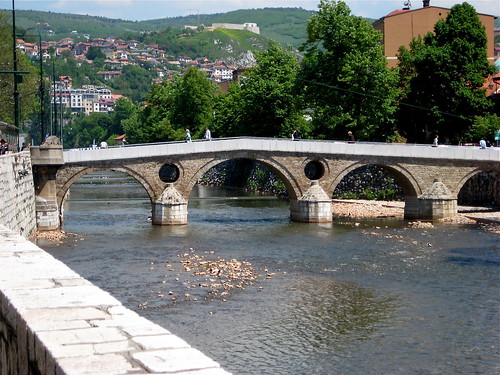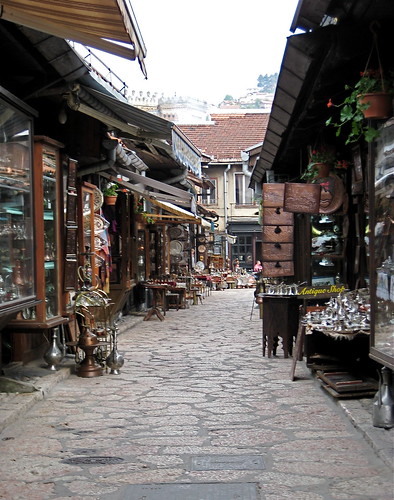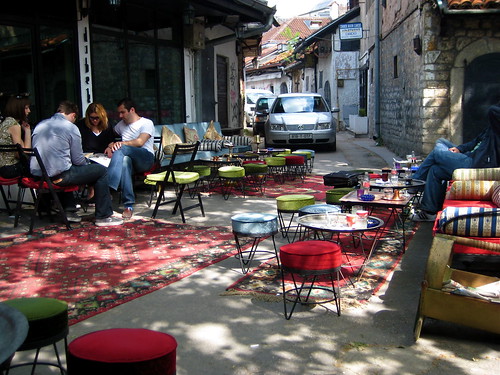I booked my ticket to Sarajevo on a blind whim. I knew about Bosnia’s recent bloody history, and I’d read an article somewhere on how pretty the city was, but other than that, I really had no idea what to expect from this beautifully named place in the center of Southeast Europe. What I found was a conflicted city, where luscious natural beauty and regal charm clashed with the physical reminders of a horrific war.
Here were some of my highlights:

The view flying into Sarajevo is breath taking. Endless green hills and snow-capped peaks surround a valley of red roofed buildings. I was in love before the plane even hit the tarmac of the infamous Butmir airport.

Sarajevo is like a cross between Vienna and Istanbul. Beautiful art nouveu architecture mashes up against elegant mosques and domes. All around the city are street cafes perfect for a rest and a cold Sarajevsko beer. Spanning the Miljacka River is the famous Spanish Bridge, where the archduke Franz Ferdinand was assassinated, sparking World War one.

On one edge of town is the neighborhood of Baščaršija, a Turkish market where the specialty is brass jewelry, plates and coffee sets. I bought a thin bronze bracelet which the craftsman engraved while I watched. Five times a day the hills echo with the Muslim call to prayer reminding you that Bosnia is one of the few Muslim countries in Europe.

It’s a beautiful and peaceful city now, but the past is never far from mind or sight. Although the worst ruins have been repaired or demolished, shattered, gutted buildings still dot the city. There is still shrapnel in the sidewalks. If you walk along the river you will come upon the formerly grand National Library of Bosnia. Serb forces bombed it in 1992, along with the 2 million volumes inside. The government doesn’t have the money to rebuild it or the heart to tear it down, so the building stands as a monument to all that’s been lost.

Even more jarring are the tombstones. They are everywhere. Glance up in any direction at the rolling hills which surround the city and you will see a sea of uniform white pillars. Get closer and you can see they are all dated within the same 5-year period. The 1984 Olympic stadium is now a massive graveyard. Some of the other hills are still blanketed in unexcavated land mines.

On our last day we took a ride out see the Sarajevo Tunnel. Cut off from the outside world and surrounded by snipers in the hills, the people of Sarajevo banded together to dig a tunnel 800 meters long that stretches underneath the airport and into what was unoccupied territory. For two years this tunnel was the only means of sneaking food, drinking water and medical supplies into the city. Crawling through the short segment of tunnel still open to the public was strange and claustrophobic, but the drive of the city to survive was inspiring.

The most amazing thing about Sarajevo was the people. These are Bosnians who loved this city so much that they could not abandon it even as the bullets flew. They’ve turned that determination towards rebuilding their beautiful city, and towards welcoming outsiders back with open arms. It’s a city I would absolutely encourage anyone to visit. The rest of the country is equally beautiful and inspiring, and I will be talking about that in more detail on Tuesday.
